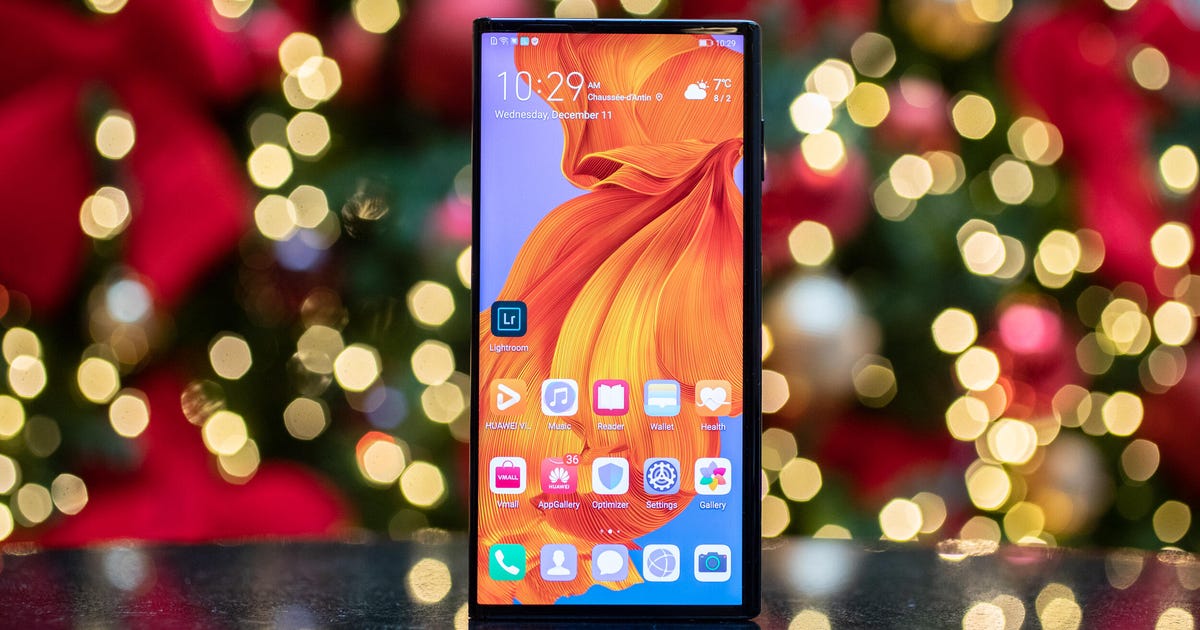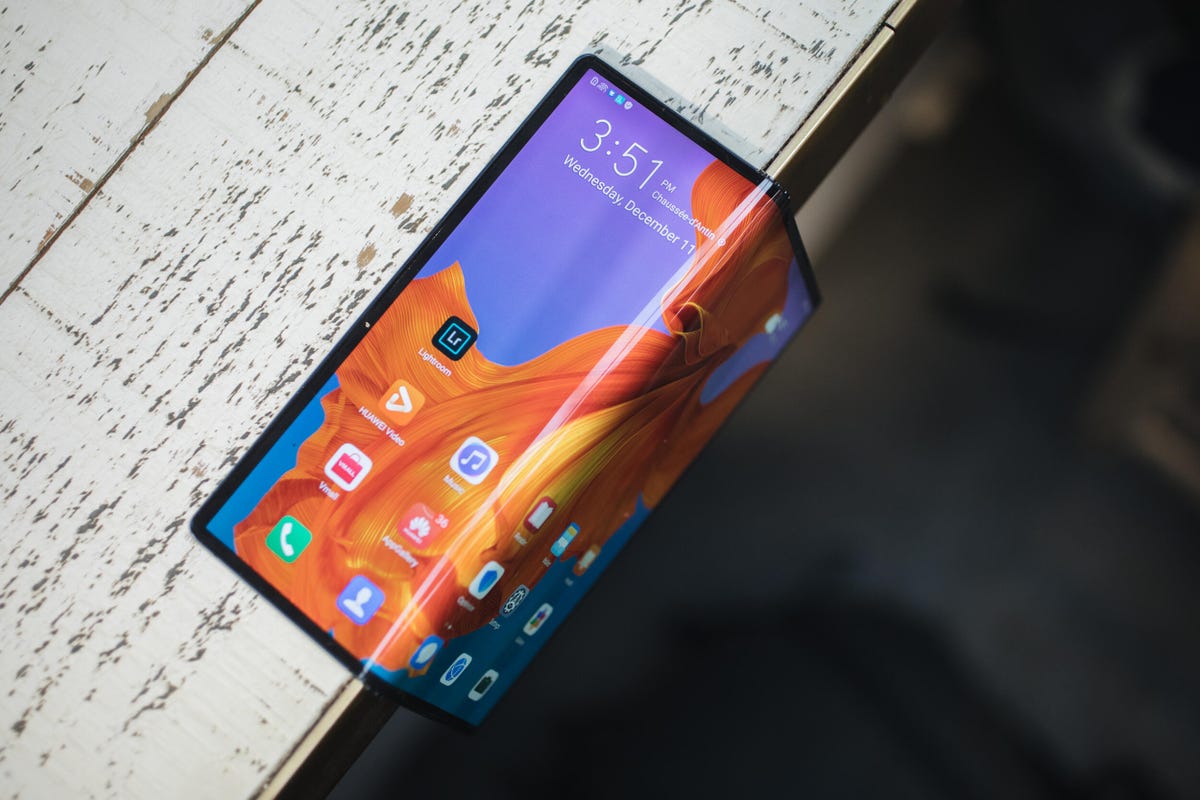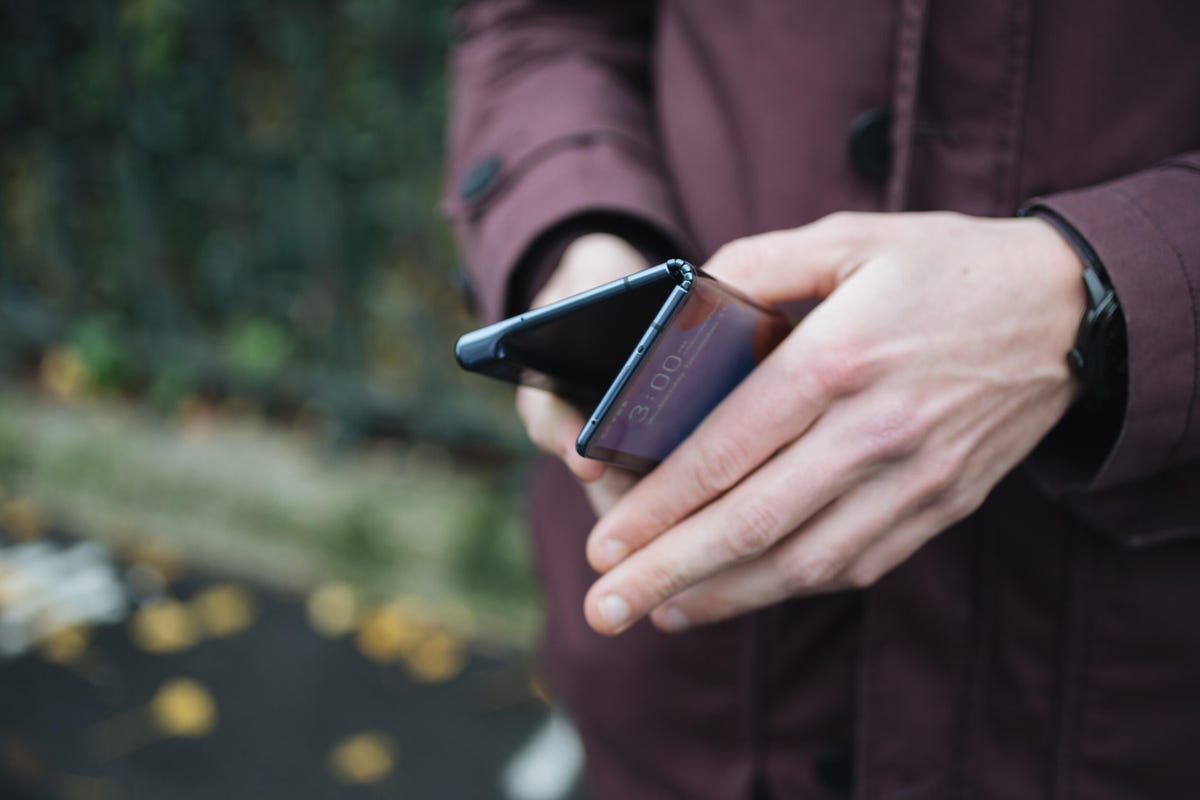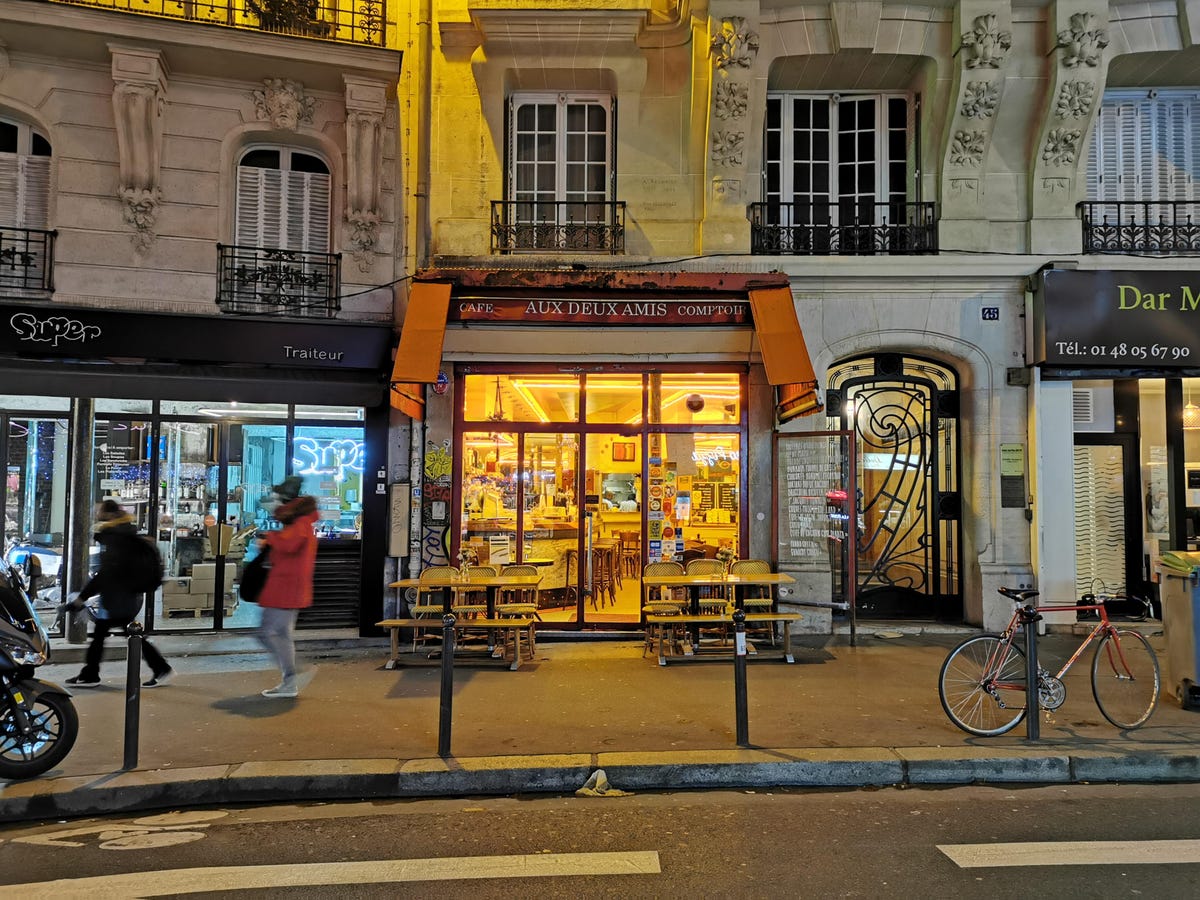
That Motorola Razr foldable will squeak out a debut before year's end
Motorola missed a targeted summer launch date for its first foldable phone, but the company still plans to announce its device by the end of the year, a person close to the company told CNET. It's unclear when the device will hit store shelves, but the press and public at least will see the phone in 2019, making Motorola the latest handset maker to jump into the market for foldables.
Read: The inside story of Motorola's foldable Razr .
The device will follow Samsung's Galaxy Fold, which hit shelves in the US on Friday, and possibly Huawei's Mate X, which hasn't yet gone on sale.
Foldables are being developed in a variety of shapes and designs. One thing they all seem to have in common, however, is delayed launch dates. Samsung and Huawei both missed their initial sales plans.
Motorola, a unit of Chinese consumer electronics giant Lenovo, has been working on a secretive foldable phone that's believed to be reviving the Razr brand. Unlike Samsung's Galaxy Fold or Huawei's Mate X, which fold outward from phones into tablets, Motorola's foldable is expected to fold inward like its popular Razr flip phones, according to a patent filing from 2017.
Though Samsung and Huawei showed off their devices at events late last year and earlier this year, Motorola has said very little about its foldable. An executive confirmed the device's existence to Engadget in February and said Motorola had "no intention of coming later than everybody else in the market." CNET later reported that Motorola planned to introduce the phone over the summer.
But summer has come and gone, and Motorola still hasn't said a word about its foldable.
It isn't alone. Early this year, foldables seemed to be the future of smartphones. In a world where phone designs have largely settled into rectangular slabs of glass, foldables represented something truly innovative: a device that's a phone when you want something compact or a tablet when you need more display real estate. Nearly every company in the handset market is believed to be looking at foldables.
Samsung and Huawei, the world's two biggest phone makers, both had grand plans to introduce foldable devices by mid-2019, racing each other to be first with the technology. The designs generated a lot of buzz and got all of us excited about phones again. Then reality hit.
Samsung's Fold woes
Early this year, Samsung seemed poised to be the first major handset maker with a foldable phone. Its $1,980 Galaxy Fold has a 4.6-inch display when folded and a separate 7.3-inch display when unfolded into a tablet. You'll be able to start using apps like Flipboard on the small, front display and then pick up where you left off when moving to the big, inside display.
Reviewers largely liked the device, but Samsung canceled the Galaxy Fold's April sales date, four days before launch, after several reporters discovered screen defects in their review units. Some peeled off a thin top layer on the display, which was an essential protective coating, not a removable screen protector. Others had detritus get under the screen itself, causing bumps and bulges.
"It was embarrassing," Samsung co-CEO D.J. Koh told reporters in late June in Korea. "I pushed it through before it was ready."

Samsung's revamped Galaxy Fold went on sale in the US on Friday.
Angela Lang/CNETAfter investigating the issues for about three months, Samsung in July said it had resolved the initial device's problems. Samsung started selling its revamped Fold in September in places like South Korea and the UK. The foldable hit the US on Friday, complete with a new customer service plan to address any issues Fold buyers have.
Huawei's delays
Huawei, meanwhile, hasn't yet started selling its foldable, the Mate X. The $2,600 phone, designed to run on super-fast 5G networks in China and other regions, made its first appearance at Mobile World Congress in Barcelona in February. CEO Richard Yu at the time said if it weren't for the need to build out 5G networks, he could ship the Mate X immediately.
Unlike the Fold, which opens like a book to reveal a bendable screen on the inside, the Mate X has its foldable screen on the exterior. It needs to be opened only when you want to access the tablet-sized display.

Huawei hasn't yet started selling its Mate X foldable.
Juan Garzon/CNETHuawei may start to sell its Mate X foldable phone as soon as October, Yu said earlier this month in a briefing at the IFA electronics show in Berlin. He blamed the delay on the rollout of 5G and the need to give developers time to adapt their apps to the new screen size.
But he also acknowledged that building a foldable phone isn't exactly easy.
"The manufacturing of this phone is not only very expensive but has some challenges for volume and mass production," Yu said.
Samsung and Huawei aren't the only companies working on foldables. Fremont, California, startup Royole became the first company to introduce a foldable phone with its Flexpai in October 2018. CNET reviewer Lynn La, during her brief time with the $1,318 device, said that "aesthetically, it still looks like a prototype rather than a refined and polished product."
Xiaomi showed off a foldable phone prototype in videos, but it's unclear when the product could launch. Fellow Chinese handset maker TCL demonstrated its concept devices at trade shows this year but said it doesn't plan to launch anything until 2020. And potential foldables from Apple, Google, LG and Lenovo so far are nothing more than rumors.
Razr's popularity
The struggles experienced by Samsung, Huawei and other handset makers are likely the same hurdles Motorola is facing.
Foldable screens are more delicate than normal smartphone displays. They're made of plastic (foldable glass isn't yet available), which means they can scratch easily.
The devices overall have some durability problems, as Samsung has found. Though it said it had resolved the problems experienced by reporters with the first iteration of the Fold, a reviewer from TechCrunch spotted a defect after using his revamped model for only a day. There haven't been reports of issues with consumers' devices in Korea, the UK and other markets where the Fold has already launched.
Samsung said that it encourages "Galaxy Fold owners to read the care instructions included in the box and in the product manual available online. Products used within these guidelines are covered under warranty." Some of those tips include being careful when folding the device to not place any objects like cards, coins or keys on the screen and not pressing on the screen with a hard or sharp object like a pen or fingernail.
Motorola likely is also watching to see the consumer response to the first foldables from Samsung and Huawei, Creative Strategies analyst Carolina Milanesi said.
"It needs to position the device very carefully," Milanesi said.
Motorola's original Razr was one of the most recognizable phone brands and carried the company to success in the flip phone market. The ultrathin phone first started off at the then-outrageous price of $500 as an exclusive phone for Cingular Wireless (now AT&T). It became one of the most popular phones in history, selling more than 50 million units within two years of its 2004 debut.
But Motorola didn't take advantage of the success of the Razr, and it struggled to compete with Apple and others in smartphones. Google purchased Motorola in 2012, and then resold it two years later to Lenovo. Motorola has made its mark largely on well-outfitted budget phones like those in the Moto G line and in the Moto Z franchise, which is upgradable to 5G via a Moto Mod attachment. But it's also aiming to get into more-premium devices, especially when it comes to 5G.
While Razr is a recognizable name, Motorola doesn't have the luxury of a huge marketing budget and product lineup like its bigger phone rivals, Milanesi said.
And even those companies have found that consumers may be wary to shell out thousands of dollars for delicate phones, making it vital for the initial products to be positioned as devices for early adopters and other people who want to start experimenting with foldable designs. There are compromises with foldable devices, like having no water or dust resistance.
"Companies get carried away with ... this is the future," Milanesi said. "But they're not careful enough to position that this is not for everybody."
When Motorola finally shows off its first foldable this year, we'll find out what the company has learned.
This article was originally published on Sept. 27, 2019.
Source
Tags:
- Motorola Droid Razr Problems
- Motorola Razr Foldable Smartphone
- Motorola Razr Phone Failure
- Motorola Razr Foldable Smartphone
- Motorola Razr Foldable Phone
- Motorola Razr Folding Phone
- Motorola Razr Foldable
- New Motorola Razr Foldable Phone
- How To Reset A Motorola Phone That Is Frozen
- Motorola Phones That Support Wifi Calling















